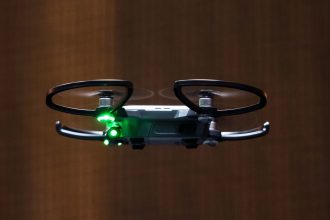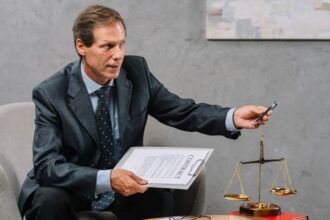Multi-vehicle accidents in Harrisonburg present unique challenges when determining fault, with the Virginia Department of Motor Vehicles reporting that approximately 35% of all traffic accidents in the state involve multiple vehicles. Harrisonburg’s busy intersections along Route 33 and Interstate 81 frequently see complex crashes where liability can be distributed among several parties, making legal expertise essential for victims seeking compensation. It can be tricky to determine fault in an accident that involves multiple drivers, as liability can be quite complicated, and one must think strategically to prove who is at fault.
In cases with two or more drivers, this post examines how lawyers work to figure out who is to blame. When facing such complex legal situations, consulting with an experienced car accident attorney in Harrisonburg can provide crucial guidance in navigating Virginia’s contributory negligence laws and ensuring your rights are protected throughout the claims process.
Gathering Evidence
Collecting evidence is the first step to proving fault. Most lawyers begin with police reports, which provide the official record of the incident. These reports usually include facts about the scene, conditions, and statements from those who were present.
Witness testimonies are also crucial. Unbiased third parties can provide observations that may not be immediately apparent. Lawyers interview these witnesses to get their perspectives to help fill in gaps in the sequence of events.
Photos taken at the scene of the crash can provide essential evidence. These images capture vehicle positions, road conditions, and any visible damage. This can be extremely important documentary evidence when reconstructing what happened.
Analyzing Traffic Laws
Traffic laws are a fundamental basis for proving fault. Attorneys review laws applicable to the crash location to see if violations occurred. This can include things like speeding, failure to yield, or running a red light.
Driving violations and other categories of driver misconduct can be identified by examining these regulations. According to the Virginia Department of Motor Vehicles, specific traffic violations carry different penalties and can significantly impact fault determination in accident cases. Attorneys can utilize this information to determine which drivers have failed in their legal duties. Proving a driver violated a traffic law significantly strengthens a liability case.
Reconstructing the Accident
In complex cases, lawyers will call on the help of reconstruction specialists. The process of recreating the pre-collision scenario is done through forensic evidence. This includes analyzing vehicle speed, road conditions, and angles of impact.
These professionals analyze data to develop simulations or models showing how the crash may have occurred. This scientific approach can be useful, and it can support a lawyer’s argument about who is at fault.
Reviewing Vehicle Damage
The amount and type of damage done to vehicles tells quite a bit about an accident. Dents, scratches, and other evidence are closely examined by lawyers to establish where and how hard an impact occurred. This helps with understanding the direction and speed of vehicles involved.
Comparing these damage patterns with driver and witness statements often allows attorneys to spot discrepancies or confirm facts. Often, this physical evidence can play a large part in establishing responsibility.
Considering Driver Behavior
Another thing lawyers look into is how all parties acted before and during the crash. They check to see if any driver was distracted, such as using a phone or engaging in other activities. Distraction is an element that can significantly impact a case.
This would also include an investigation into whether any driver may have been intoxicated. If someone was impaired in a way that made it impossible for them to operate a vehicle safely, that can be a key factor in establishing liability.
Using Technology and Data
In this modern age, there are many technological tools that may help prove fault. Most modern cars have event data recorders (black boxes) that capture information about speed, sudden braking, and other situations that impact the vehicle. This data provides lawyers with insight into the most critical moments before the crash.
In addition, nearby surveillance cameras may have recorded the incident. High-definition footage from traffic cameras, business security systems, or even smartphones can corroborate or challenge the statements made by drivers.
Negotiating With Insurance Companies
After the collection and analysis of all evidence, lawyers often engage in negotiations with insurance companies. They present these findings to argue for appropriate compensation based on fault determination. This is where knowledge of the evidence and the law is essential to the negotiation process.
Insurance companies will have their interpretations, so lawyers need to counter arguments with solid evidence. This step is important in ensuring that victims receive proper compensation for their damages.
Conclusion
There is a systematic method to proving fault in multi-vehicle crashes. Using evidence, laws, and technology, lawyers can build a strong argument to support their case. Each piece of evidence adds to the complete picture of what happened and helps establish accountability and justice for those injured.














